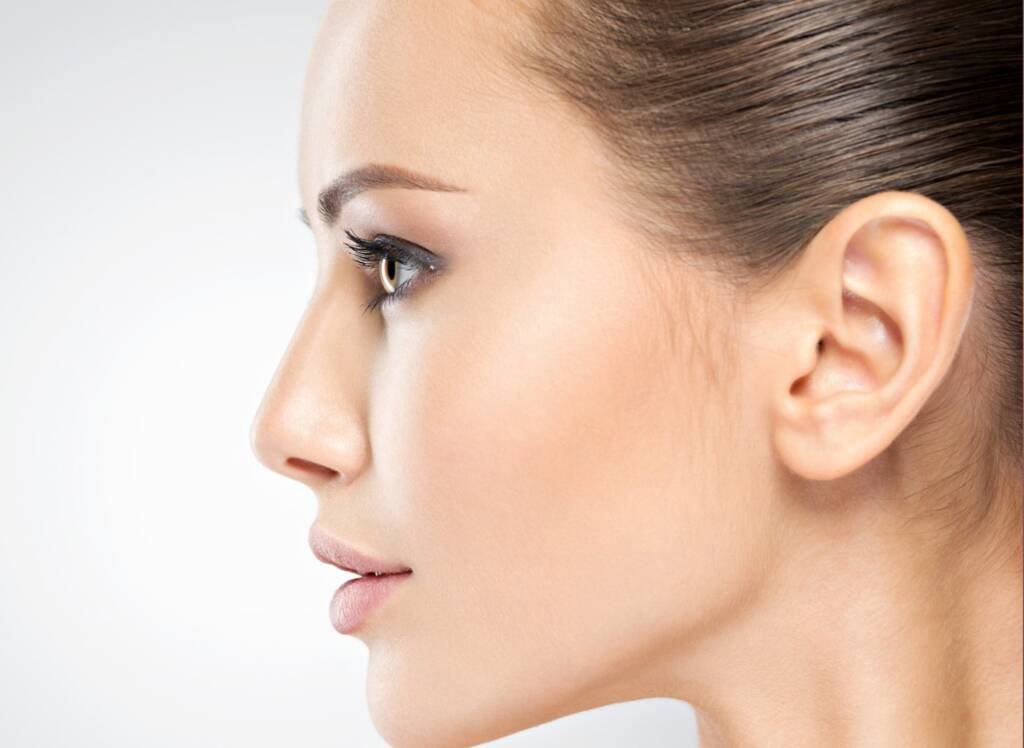Preservation rhinoplasty, a newer approach to nasal surgery, is gaining popularity in Miami for its less invasive methods and quicker recovery times. Patients seeking to enhance their nasal aesthetics while maintaining the natural structure of their nose find this technique particularly appealing. In Miami, preservation rhinoplasty not only offers aesthetic improvements but also ensures the maintenance of nasal function, providing a comprehensive solution for anyone looking to achieve a balanced, natural look.
This procedure is a nuanced and sophisticated procedure that requires artistic skill. When performed correctly, it enhances the nose’s appearance while maintaining harmony with other facial features, allowing the eyes and smile to naturally draw attention.
Selecting the right surgeon is crucial for successful outcomes. Miami is home to Bart Kachnriaz known as Dr. K, a renowned plastic surgeon who specialize in preservation rhinoplasty, bringing a combination of expertise and cutting-edge techniques to the table.
We understand the intricacies of cosmetic procedure and can help you get the look you desire. Visit our consultation page to get a free consult from Dr. K to see if this procedure is right for you.
What is Preservation Rhinoplasty Surgery?
Preservation rhinoplasty is a modern surgical approach in rhinoplasty that focuses on preserving the nose’s natural structures while achieving aesthetic and functional improvements. It offers an alternative to traditional open and closed rhinoplasty techniques, aiming for simpler healing and enhanced outcomes.
Preservation rhinoplasty revolves around maintaining the original anatomical structures as much as possible. This approach contrasts significantly with traditional rhinoplasty, which often involves extensive reshaping and grafting.
Rhinoplasty techniques, like dorsal preservation, allow modification of the nasal dorsum without excessive cartilage or bone removal. This is often achieved through subdorsal and endonasal approaches, minimizing disruption to the nasal framework.
The surgical procedure typically involves less invasive maneuvers, promoting natural-looking results. Surgeons using preservation methods aim to retain the natural curvature and function of the nose, often resulting in a more harmonious appearance.
This cosmetic procedure can address various concerns, including:
- Oversized, crooked, or wide noses
- Nasal profiles with visible bumps or depressions
- Bulbous, droopy, or upturned nasal tips
- Uneven or oversized nostrils
- Breathing obstructions due to structural abnormalities
Advantages of Preservation Rhinoplasty
There are several key benefits associated with preservation rhinoplasty:
- First, by maintaining the structural integrity of the nose, the risk of complications such as over-resection is minimized. This reduces the likelihood of requiring revision surgeries.
- Second, patients can experience a shorter recovery time compared to traditional techniques. The less invasive nature of the procedures means less swelling and bruising post-surgery.
- Third, the results of preservation rhinoplasty can be more natural-looking. By preserving the nose’s inherent structures, the outcomes often align better with the patient’s original facial features.
- Fourth, this surgery results in minimal scarring, giving patients the perfect look without the downsides
- Lastly, this technique can also improve nasal functionality, addressing issues such as breathing difficulties while enhancing the nose’s appearance.

Am I a Candidate for Surgery?
Not everyone is an ideal candidate for preservation rhinoplasty. Age plays a crucial role; patients should typically be in their late teens or older. This is because the nasal structures need to be fully developed to avoid complications.
Dr. K will conduct a thorough physical examination to evaluate nasal structure. He will assess the skin type, nasal cartilage, and bone structure. Prospective patients should also discuss their aesthetic concerns to align their expectations with realistic outcomes, allowing Dr. K to tailor a treatment plan to your specific needs.
Medical history and previous nasal surgeries are reviewed, ensuring there are no health conditions that could interfere with the surgery or recovery. Smoking and other lifestyle factors are also considered, as they can affect healing.
Ideal candidates are typically adults with fully developed nasal structures, in Good overall health, and non-smokers. It’s crucial to have realistic expectations, seeking improvement rather than perfection.
During your consultation, Dr. K will assess your specific case and discuss your goals to determine if you’re a suitable candidate. Advanced 3D imaging technology may be used to visualize potential outcomes, helping align your expectations with achievable results and allows for a tailored surgical plan
Rhinoplasty may be recommended for various reasons, including obstructed breathing, unsatisfactory appearance, nasal injury affecting appearance or breathing, nasal birth defects, or acquired deformity due to trauma or other causes.
What are the differences between Preservation rhinoplasty compared to traditional rhinoplasty?
Preservation rhinoplasty and traditional rhinoplasty differ in several ways.
Traditional rhinoplasty involves extensive reshaping and removal of bone and cartilage, often through an open technique that requires an external incision across the columella to provide broad access to the nasal structures. This approach can result in significant aesthetic changes, sometimes leading to a more “operated” appearance.
In contrast, preservation rhinoplasty focuses on maintaining the natural anatomical structure without extensive removal of bone and cartilage, often employing a closed or less invasive approach with incisions inside the nostrils. This results in reduced visible scarring and maintains the integrity of the nasal area. Preservation rhinoplasty prioritizes a natural appearance, achieving harmonious and subtle aesthetic changes that blend with the patient’s facial features, and typically maintains or improves nasal functionality, reducing the risk of breathing issues.
The less invasive techniques result in quicker recovery times with less swelling and bruising, and a lower risk of complications, thereby reducing the likelihood of needing revision surgeries.
Procedure
Patients undergoing rhinoplasty in Miami typically receive general anesthesia or local anesthesia with sedation. General anesthesia ensures the patient is fully asleep and unaware during the surgery. It is generally preferred for complex procedures. Local anesthesia with sedation involves numbing the nasal area and providing medication to relax the patient.
The choice of anesthesia depends on the patient’s health, the complexity of the surgery, and the surgeon’s recommendation. Stringent monitoring is maintained throughout the operation to ensure patient safety.
During preservation rhinoplasty, advanced methods using ultrasonic equipment are used to precisely mold nasal bones, minimizing trauma and optimizing results. This approach often leads to more natural-looking outcomes and potentially longer-lasting results.
In some cases, more extensive reconstruction may be necessary. This can involve using skin flaps or grafts to replace missing tissue, and cartilage from the ear, septum, or rib for reshaping. These techniques are particularly useful for addressing significant nasal deformities resulting from trauma or cancer surgery.
Open vs. Closed Technique
Two main techniques are used in preservation rhinoplasty: open and closed. Open rhinoplasty involves a small incision across the columella, providing greater access to the nasal structures.
Closed rhinoplasty uses incisions inside the nostrils, leaving to no visible scarring. It is less invasive and often chosen for minor reshaping. The technique selection depends on the extent of modifications needed and the surgeon’s expertise.
Nasal Bone and Cartilage Modification
Reshaping the nose often necessitates modifications to the nasal bones and cartilage. During the procedure, the surgeon carefully adjusts these structures to improve the nose’s appearance and function.
The nasal bones may be fractured or realigned to narrow or straighten the nose. Cartilage grafts are sometimes used to add volume or support. Precision in these modifications is essential for achieving natural-looking results and maintaining nasal airflow.

Recovery
Patients must follow specific postoperative care instructions given by their doctor to ensure optimal recovery. Splints or nasal dressings are typically applied immediately after surgery to maintain the nose’s new shape and should remain in place for about a week. Sutures are often dissolvable, but any that are not will be removed during a follow-up visit.
Patients are generally advised to keep their head elevated and avoid strenuous activities. Cold compresses can help reduce swelling and bruising. Adhering to prescribed medications including pain relief and antibiotics can prevent complications such as infection or severe discomfort.
Healing Process Timeline
The healing timeline for preservation rhinoplasty involves several stages. Initial swelling and bruising peak around 2–3 days post-surgery but begin subsiding after the first week. Most patients return to daily non-strenuous activities within 7–10 days.
Splints and dressings are usually removed after a week, revealing an initial glimpse of the results. Full recovery, including the resolution of all swelling and the final shape of the nose, may take up to a year. Regular follow-up appointments with the surgeon ensure proper healing and address any concerns.
Patients should avoid strenuous activities for 4–6 weeks post-surgery and may need assistance for the first 24–48 hours.
Managing Post-surgery Discomfort
While preservation rhinoplasty is designed to be less invasive, patients may still experience discomfort. Common pain management options include prescription pain medications and over-the-counter solutions such as extra-strength Tylenol. Ensuring consistent adherence to the pain management plan prescribed by the surgeon can greatly enhance comfort levels during recovery. Dr. K will prescribe appropriate pain medication to manage any discomfort during recovery.
Potential complications include infection, excessive scarring, or dissatisfaction with the aesthetic outcome. It is important to monitor for signs of infection, such as unusual redness, increased pain, or discharge, and to contact the surgeon immediately if these occur. Proper scar care routines and following all aftercare instructions will significantly contribute to a successful and smooth recovery process.
What to Expect from Your Results
After preservation rhinoplasty, the results can be seen once the initial healing phase is over, usually within a few weeks. Patients will notice an improved nose shape without a visible bump or irregularities.
The main goal is to create a nose that fits well with the patient’s facial features. This can boost self-esteem as the nose appears more harmonious and less altered compared to traditional methods.
The tip of the nose can be reshaped without excising cartilage, which helps to avoid a bulbous appearance. Sutures are used to achieve the desired nose shape, preserving the natural anatomy.
Long Term
Several factors contribute to the longevity of rhinoplasty results. One crucial factor is the surgical technique. Preservation rhinoplasty focuses on maintaining the soft tissue and cartilage, which can provide longer-lasting results.
The patient’s age also plays a role. Younger patients tend to heal more quickly, but may experience changes over time due to aging. Conversely, older patients may have slower healing, but the results could remain more stable.
Other factors include the patient’s skin type, overall health, and post-surgery care. Adhering to post-operative instructions helps minimize complications and extend the longevity of the results. Regular follow-ups with the surgeon ensure any minor issues are addressed promptly.
Surgery Risks
Every surgery carries some risks. Some of these include:
- Infection
- Bleeding
- Scarring
- Nasal Obstruction or Breathing Issues
- Asymmetry and Unsatisfactory Results
- Changes in Nasal Sensation
- Swelling and Bruising
- Anesthesia Risks
- Prolonged Healing
- Need for Revision Surgery

Non-Surgical Rhinoplasty Options
Many individuals seek less invasive procedures. Non-surgical rhinoplasty involves the use of fillers to reshape the nose without surgery. This option is ideal for those looking to correct minor issues like humps or indentations.
Fillers can improve the nose’s appearance with minimal recovery time. Results are not permanent, usually lasting about 12–18 months. This approach offers a quick and temporary solution for those seeking subtle changes without the commitment of surgery.
How Much is reservation Rhinoplasty Cost in Miami?
The cost of preservation rhinoplasty in Miami varies from approximately $5,000 to $15,000. Several factors influence this range.
The complexity of the procedure affects the total cost. More intricate cases requiring extensive work on the nasal structure might elevate the price. Additionally, facility fees, anesthesia, and postoperative care are typically included in the total cost.
The exact cost depends on your specific needs and facial structure. A personalized quote will be provided after your consultation with Dr. K.
Patients often explore financing options to manage the expense.
Financing and Payment Plans
Many clinics offer financing options to help patients manage the cost of rhinoplasty. Some common financing methods include:
- CareCredit: A healthcare credit card that allows patients to pay over time.
- Payment Plans: Installment plans arranged directly with the clinic.
- Personal Loans: Patients can also consider taking out a personal loan.
While cost is a consideration, it’s crucial to prioritize the surgeon’s experience and expertise. Look for surgeons who perform a high volume of rhinoplasties annually, as this often translates to more refined skills and better outcomes.
Frequently Asked Questions
What are the potential disadvantages of preservation rhinoplasty surgery?
While preservation rhinoplasty aims for less invasive adjustment, it may not suit every individuals face as the surgery does not radically alter the nose as much as a traditional rhinoplasty. Some patients might require a revision surgery if the desired outcome is not achieved initially.
What can I expect during recovery?
Recovery generally involves less swelling and bruising compared to traditional rhinoplasty. Initial swelling and bruising peak around the second or third day post-surgery but begin to subside after the first week. Most patients can return to non-strenuous activities within 7–10 days. Full recovery, including the resolution of all swelling and the final shape of the nose, may take up to six months.
Regular follow-up appointments with Dr. K ensure proper healing and address any concerns. Post-surgery care may include taping the nose and specialized treatments to enhance healing. The final results emerge gradually over several months as swelling subsides.
How long does the procedure take?
The duration of the procedure can vary depending on the complexity of the case and the specific techniques used, but generally takes between 1–3 hours. During your consultation, your surgeon will provide a more precise estimate based on your individual needs and the extent of the modifications required.
How soon can I return to work?
Most patients can return to non-strenuous work within 7 to 10 days after surgery. However, this can vary based on the individual’s healing process and the nature of their job. If your work involves physical activity or exposure to environments that could impact your recovery, your surgeon may recommend taking additional time off.
Will I have visible scars?
Preservation rhinoplasty often uses a closed approach, which involves making incisions inside the nostrils, resulting in no visible external scars. If an open technique is required for more complex cases, the incision is made across the columella, which typically heals well and becomes nearly imperceptible over time.
At what age can you get a nose job?
Typically, girls can undergo rhinoplasty around 15–16, and boys a bit later. Dr. K will assess if you’re physically and emotionally ready.
Is rhinoplasty painful?
The surgery itself is not painful due to anesthesia. Post-surgery discomfort is managed with prescribed medications.
.
Choosing the Right Surgeon
When selecting a surgeon for complex preservation rhinoplasty, consider the following:
- Board certification in plastic surgery
- Specialization and experience in preservation rhinoplasty
- Review of before-and-after photos
- Patient reviews and testimonials
- A comprehensive consultation to discuss your goals and expectations



